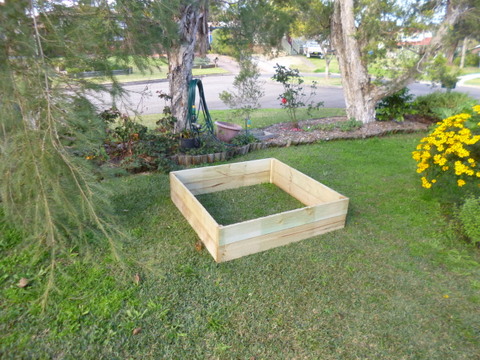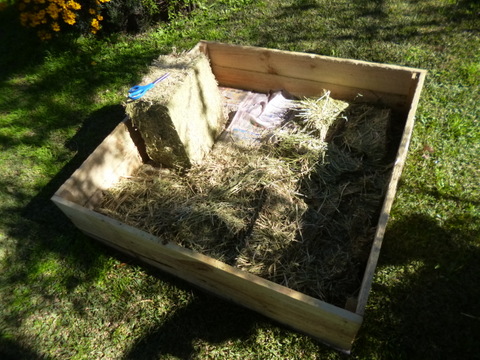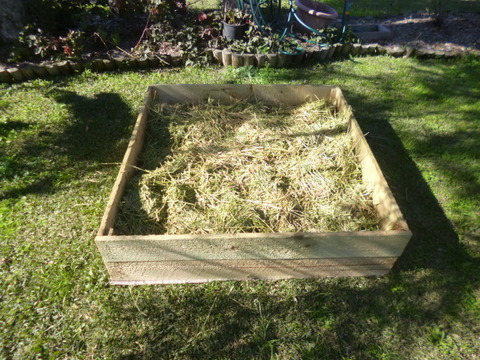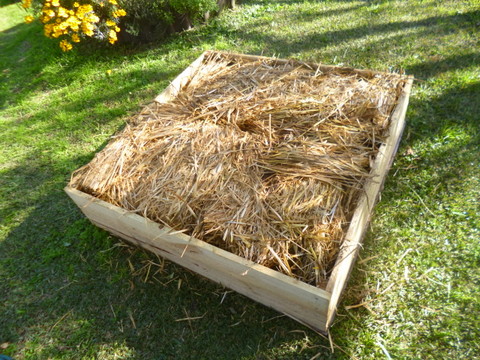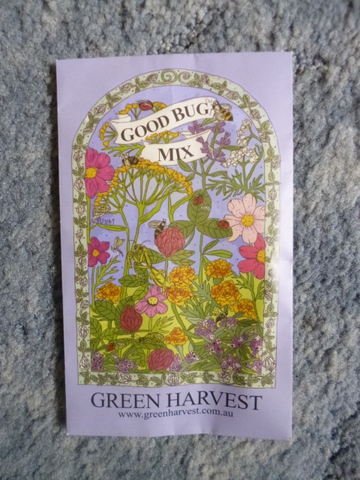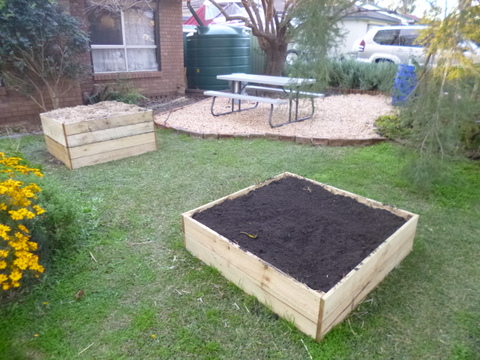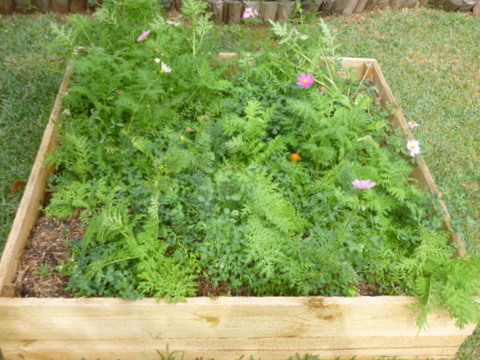Insectary beds are beds of nectar and pollen producing flowering plants which attract beneficial insects, both pest predators and pollinators to help you make your food production efforts more effective. I specifically designed my first insectary area in the back yard near the veggie patches and it required some work and research on plant species, flowering times and other plant requirements. But what if you don’t want to go through that crap? I wanted an insectary bed in the front yard as well and this time I did it the easy way!
First off I got hold of some timbers to make a 30cm high raised bed. It was a commercially available veggie bed “kit” based on timber preserved with Alkaline copper quaternary (not CCA – copper, chrome, arsenic) which is safe to grow food in. I put it together and placed it on the grass where I wanted it to go. To prevent the grass growing through I put a thick layer of newspaper underneath and placed bed so that the newspaper projected under the timber frame.
On top of the newspaper I laid down some “biscuits” of Lucerne hay. When hay or straw is harvested the machine makes the bales by compressing the plant material into sections. When the restraining blue string is cut the plant materials comes away from the rest of the bale and are generally called (around here at least) biscuits. I placed two layers of Lucerne hay biscuits over the paper on the inside of the assembled bed, so in other words I did not pull the hay apart of fluff it up, I left it densely packed. I gave both layers a good watering to make sure that they were thoroughly wet. This speeds decomposition which makes the nutrients in the hay available to the insectary plants.
With the Lucerne in place I did a similar thing with some straw bales which had been given to me by a friend. That almost filled up the bed and I gave the straw a thorough watering as well. The remaining 25 – 50mm between the top of the straw and the top of the bed I filled with compost and then gave it one more good watering. After the bed was finished I left it for a few weeks for decomposition to commence. It was winter so it would take a while to break down in the cooler weather as well as the fact that the seeds for the insectary plants could not be planted until spring.
To make things easy for myself I got hold of a packet of Good Bug seed mix from Green Harvest and broadcast most of it on the top of the 1.2 metre x 1.2 metre bed as evenly as I could, then covered it with some cocopeat. After that it was just a case of keeping it moist until the seeds germinated. By summer I will have a lovely insectary bed, full of nectar-containing flowers helping me to pull in those pollinators and predators.
The job of growing food is much easier when nature is doing some of the work!



